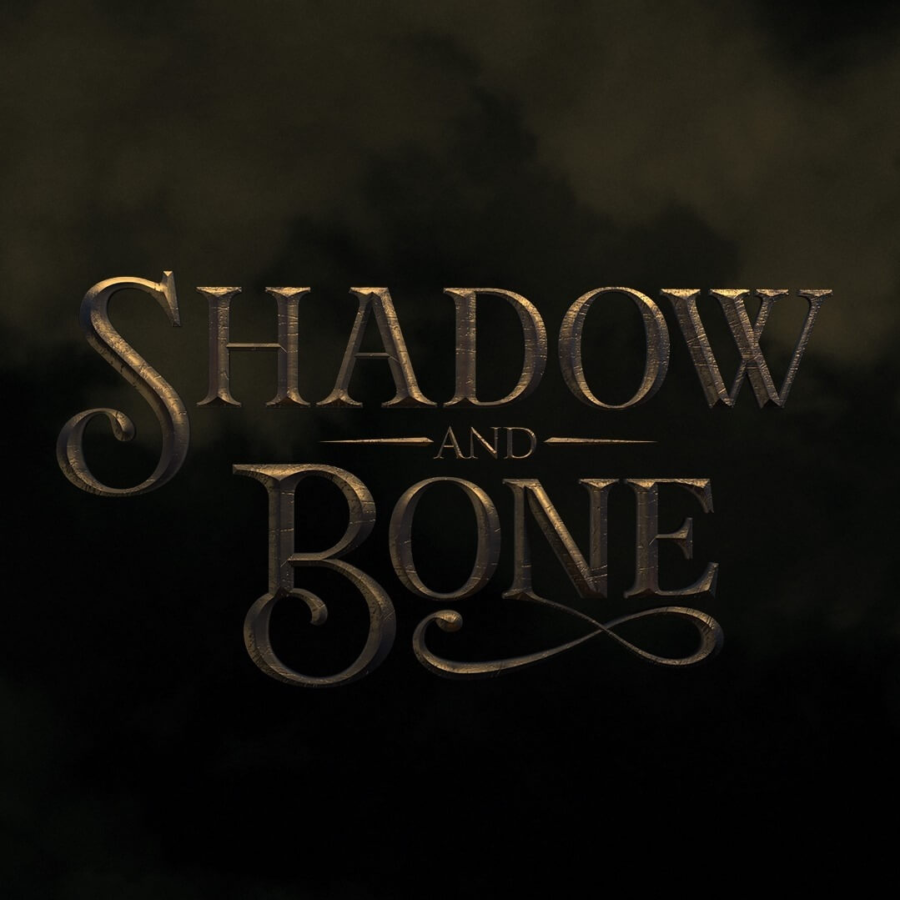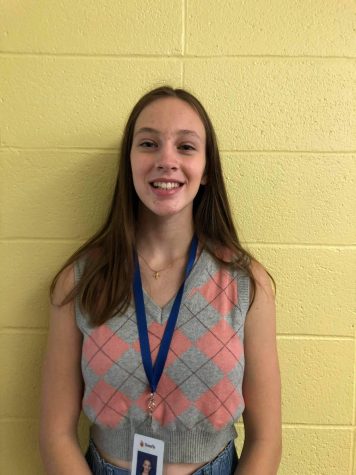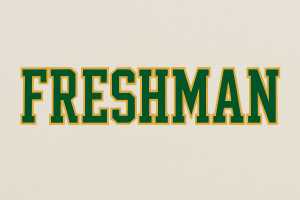Shadow and Bone: A Fresh Approach to Fantasy TV
June 2, 2021
If you are one of the 73 million Americans who own a Netflix account, chances are you’ve seen a glimpse of a silvery stag wandering across your Netflix home page this month, clouded in magical mist, with antlers shimmering in striking sunlight. Shadow and Bone arrived on the streaming platform a little less than a month ago, and since then it has swept the world of fantasy fandom into a storm. As a typical Netflix viewer, you might have heard a little about the upcoming show in the weeks prior to April 23rd, and maybe you were even so enticed by the home page teaser that you decided to give it a shot. However, if you’re a hardcore fantasy book fan, you’ve probably been waiting for this show for two years, geeking out over the casting announcements, and screaming in frustration when COVID-19 delayed its release. And, you probably already know exactly what we’re about to relate.
To say Shadow and Bone has been a hit would be just a little bit of an understatement, if sitting atop the US Netflix Top 10 list for a week straight and being deemed one of the best book-to-screen adaptations ever by book-tubers and critics alike are any indicators. If one thing is for certain, it is that Shadow and Bone is unlike any book-based show you’ve ever watched before, and for a number of reasons. The show is based on the best-selling books by Leigh Bardugo, which take place in a fantastical world known as the Grishaverse, where some people, known as Grisha, are born with the ability to manipulate matter. There are nine books centered in this world so far: the Shadow and Bone trilogy, the Six of Crows duology, the King of Scars duology, The Lives of Saints, and The Language of Thorns: Midnight Tales and Dangerous Magic. While these books all take place within the same magical world, they follow the lives of different characters, are set in different countries, and occur years apart on a timeline.
The show follows the plotline of the first book in the Shadow and Bone trilogy. In the first episode we meet our main character Alina Starkov (Jessie Mei Li), who soon discovers she has the rare ability to summon sunlight. Her country, known as Ravka, is split in two by a treacherous piece of the land called the Fold, in which constant darkness prevails and dangerous creatures prey. This discovery changes Alina’s life abruptly, as her new-found abilities may be the only thing that can save her country from the everlasting darkness. The first season follows Alina’s experiences as she adapts to her new life and learns to build her abilities, but it also includes another major storyline, one that wasn’t in the book at all, and this is where it gets really interesting.
In the first episode, we also meet the characters of Kaz Brekker (Freddy Carter), Inej Ghafa (Amita Suman), and Jesper Fahey (Kit Young), three of the main characters in the Six of Crows duology mentioned previously. The catch is that these characters have nothing to do with the plot of Shadow and Bone in the books; in fact, Six of Crows takes place two years after the end of the trilogy and is set in a country known as Kerch. If you’re a little confused as to how they might have done this, we understand why. The creators developed a new storyline for the “Crows” characters, one that has been described by showrunner Eric Heisserer and author Leigh Bardugo as being a “prequel” to the actual events of the Six of Crows books. As a result of this, the Six of Crows characters interact with the Shadow and Bone characters in ways that could never have happened in Bardugo’s works.
This is obviously a major change from the source material, and while many book fans were hesitant to see how it might play out, in general, most fans believe they made this merge well. As someone who has read the trilogy and the duology, however, I (Bina) didn’t like this particular change. Most fans typically prefer the “Crows” characters over the characters in the Shadow and Bone books because of the intricacy of each character’s distinct personalities, abilities, and relationship with each other. To me, introducing these rich characters in a different way and fabricating a whole different heist involving Alina in Ravka, which never occurred in the books, all seemed off. When the “Crows” met and interacted with the Shadow and Bone characters, it felt like watching someone’s fanfiction unfold.
There are several other significant changes that I (Rowan) think are important to note as well. The first being the decision to make Alina a mixed-race character of Ravkan and Shuhan (another country in this fantastical world) descent, while in the books she was a perceived-white character. Sometimes when this occurs in media productions, it is simply for the purpose of bringing more diversity to the cast, but this is thankfully not the case with Shadow and Bone. The writers made this change and actively worked to include Alina’s race as being an integral part of her story, to bring to light the prevalence of racism in today’s society. The racism and discrimination that Alina faces in the show parallels what is often seen in today’s world, which raises an important discussion and sends strong messages. The fact that this issue wasn’t shied away from but instead included in a fantasy world, where stereotypically these issues aren’t talked about, is an important step for the film industry. It is also somewhat rare that we see an Asian lead in a show like this, so seeing Jessie Mei Li, who is a British-Chinese actress, embodying such a strong and powerful character has been really meaningful for a lot of viewers. Li has also spoken a lot about how they were able to draw from their own experiences being mixed-race, and form parallels to Alina’s experiences.
In fact, the casting is probably one of the best aspects of the show. Many of Bardugo’s characters are very in-depth, with intricate backstories, yet all members of the cast embodied their characters exceptionally well. This was a big relief for book-fans, as oftentimes media adaptations change major aspects of characters, and made the show super enjoyable to watch. With the “Crows” characters especially, Kaz, Jesper, Nina, Matthias, Inej were not only how I (Bina) had physically imagined the characters to look, but they interacted with each other just how they had in the books. The cast are all very close friends, as well, which made the interactions between their characters on screen even better. Kit Young (Jesper), Danielle Gallaghan (Nina), and Calahan Skogmann (Matthias) also have similar personalities to those of their characters, which made the fans love them even more.
In terms of representation, the casting was also extremely diverse, something that is still rare for the industry. The Shadow and Bone, and Six of Crows books already provide a diverse array of characters, and this was implemented well into the show. For example, Inej is Sulli, a nomadic people group inspired by various Middle Eastern cultures, and her dark copper skin is a significant aspect that has shaped her identity. Amita Suman, who plays Inej, is a Nepali-Britsh actress, and has repeatedly talked about how meaningful it was for her to get to play a character who lacked harmful racial stereotypes. Zoya Nazyalensky, another character, is half-Sulli, and is played by Sujaya Dasgupta, a British actress of Indian heritage. In Bardugo’s series, there is also another Six of Crows character, a Heartrender named Nina, who is portrayed by Irish actress Danielle Galligan. Nina is described in the book as being curvy, and many fans were happy to see a character who had a body similar to theirs when representation like this isn’t very common in the media. Most of the cast are also relatively new faces within the acting industry, with the exception of Ben Barnes (General Kirigan), who is a well-known British actor, and Zoë Wanamaker (Baghra). As the audience, we both loved this aspect because we got to get to know talented new actors, and so it was new for us as well.
As someone who didn’t read the book first, however, I (Rowan) felt that there were a few things the show could have done better. To me, the show felt like it was directed specifically towards book fans who had previous knowledge about the world and the terminology. This isn’t necessarily a negative thing, but I do wish they had given a little bit more background information into the nature of the world in the beginning of the show. For example, terms like Corporalike, Etherealki, and Materialki, which are different orders of Grisha, could have used a little bit more explanation, as they were only mentioned in passing yet were integral to fully understanding the story. I wound up having to watch the first few episodes slowly, and I occasionally had to pause to try and understand what was going on, but once you get the hang of the world, the intricate plot, astounding visual effects, and incredible acting make it all worth it. For this reason, I would probably recommend one read at least the first Shadow and Bone book before watching the show, although I wouldn’t say it is necessary to do so in order to have a good viewing experience.
Even if you don’t plan on watching the show, I (Bina) still recommend the Shadow & Bone trilogy, the Six of Crows duology, and the rest of Leigh Bardugo’s Grishaverse works. There are still a few important characters whom the show hasn’t introduced yet, but they are many of the fans’ favorites (as are mine). Netflix hasn’t officially renewed the show yet, but Grisha fans are highly anticipating an announcement for a second season.


















































































































































